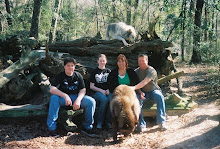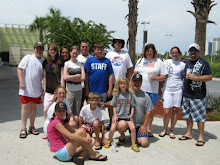Wednesday, May 19, 2010
Tuesday, March 2, 2010
UNDERDEVELOPED COUNTRY REPORT
UNDERDEVELOPED COUNTRY REPORT
In Nicaragua, the population is 5,891,199, but the infant mortality rate is 1,000. Since 2007, the president of Nicaragua has been Daniel Ortega. The land area is 46,430 sq. miles. This underdeveloped country is the largest, yet most sparsely populated of the Central American nations. Nicaragua borders Honduras to the north and Costa Rica to the south. It is slightly larger than New York State. Nicaragua is mountainous in the west, with fertile valleys. The Tipitapa River connects two big lakes. The Pacific coast is volcanic and very fertile. The swampy Caribbean coast was named the “Mosquito Coast.”
The Spanish first settled Nicaragua, which derives its name from the chief of the area’s leading Indian tribe at the time of the Spanish Conquest, in 1522. The country won independence in 1838. For the next century, Nicaragua's politics were ruled by the competition for power between the Liberals, who were centered in the city of León, and the Conservatives, centered in Granada.
To back up its support of the new Conservative government in 1909, the U.S. sent a small detachment of marines to Nicaragua from 1912 to 1925. The Bryan-Chamorro Treaty of 1916 gave the U.S. an option on a canal route through Nicaragua and naval bases. U.S. Marines were sent again to quell disorder after the 1924 elections. A guerrilla leader, Gen. César Augusto Sandino, fought the U.S. troops from 1927 until their withdrawal in 1933.
In Nicaragua, the population is 5,891,199, but the infant mortality rate is 1,000. Since 2007, the president of Nicaragua has been Daniel Ortega. The land area is 46,430 sq. miles. This underdeveloped country is the largest, yet most sparsely populated of the Central American nations. Nicaragua borders Honduras to the north and Costa Rica to the south. It is slightly larger than New York State. Nicaragua is mountainous in the west, with fertile valleys. The Tipitapa River connects two big lakes. The Pacific coast is volcanic and very fertile. The swampy Caribbean coast was named the “Mosquito Coast.”
The Spanish first settled Nicaragua, which derives its name from the chief of the area’s leading Indian tribe at the time of the Spanish Conquest, in 1522. The country won independence in 1838. For the next century, Nicaragua's politics were ruled by the competition for power between the Liberals, who were centered in the city of León, and the Conservatives, centered in Granada.
To back up its support of the new Conservative government in 1909, the U.S. sent a small detachment of marines to Nicaragua from 1912 to 1925. The Bryan-Chamorro Treaty of 1916 gave the U.S. an option on a canal route through Nicaragua and naval bases. U.S. Marines were sent again to quell disorder after the 1924 elections. A guerrilla leader, Gen. César Augusto Sandino, fought the U.S. troops from 1927 until their withdrawal in 1933.
Christians in Science
In this four hundred-word report, I will be giving you much information on him starting on when and where he was born. This man, Isaac Newton was born 1642 near the town Grantham. This is the same town he would attend college in 1661; he was soon elected a fellow of Trinity College in 1667, as well as the Lucasian professor of mathematics just two years later. He remained at the university; most of the years were spent lecturing. However one of these years while he was at the height of his creative power he singled out 1666 and 1667 (Most of which was spent in Lincolnshire due to plague in Cambridge) as "the prime of my age for invention". During two to three years of intense mental effort he prepared Philosophiae Naturalis Principia Mathematica (Mathematical Principles of Natural Philosophy) commonly known as the Principia, although this was not published until 1687.
As a firm opponent of the attempt by King James II to make the universities into Catholic institutions, Newton was elected Member of Parliament for the University of Cambridge to the Convention Parliament of 1689, and sat again in 1701-1702. Meanwhile, in 1696 he had moved to London as Warden of the Royal Mint. He became Master of the Mint in 1699, an office he retained to his death. He was elected a Fellow of the Royal Society of London in 1671, and in 1703 he became President, being annually re-elected for the rest of his life. His major work, Opticks, appeared the next year; he was knighted in Cambridge in 1705.
As Newtonian science became increasingly accepted on the Continent, and especially after a general peace was restored in 1714, following the War of the Spanish Succession, Newton became the most highly esteemed natural philosopher in Europe. His last decades were passed in revising his major works, polishing his studies of ancient history, and defending himself against critics, as well as carrying out his official duties. Newton was modest, diffident, and a man of simple tastes. He was angered by criticism or opposition, and harboured resentment; he was harsh towards enemies but generous to friends. In government, and at the Royal Society, he proved an able administrator. He never married and lived modestly, but was buried with great pomp in Westminster Abbey.
For nearly three hundred years Isaac Newton has been regarded as the father of modern physics, and maybe will be for another three hundred.
As a firm opponent of the attempt by King James II to make the universities into Catholic institutions, Newton was elected Member of Parliament for the University of Cambridge to the Convention Parliament of 1689, and sat again in 1701-1702. Meanwhile, in 1696 he had moved to London as Warden of the Royal Mint. He became Master of the Mint in 1699, an office he retained to his death. He was elected a Fellow of the Royal Society of London in 1671, and in 1703 he became President, being annually re-elected for the rest of his life. His major work, Opticks, appeared the next year; he was knighted in Cambridge in 1705.
As Newtonian science became increasingly accepted on the Continent, and especially after a general peace was restored in 1714, following the War of the Spanish Succession, Newton became the most highly esteemed natural philosopher in Europe. His last decades were passed in revising his major works, polishing his studies of ancient history, and defending himself against critics, as well as carrying out his official duties. Newton was modest, diffident, and a man of simple tastes. He was angered by criticism or opposition, and harboured resentment; he was harsh towards enemies but generous to friends. In government, and at the Royal Society, he proved an able administrator. He never married and lived modestly, but was buried with great pomp in Westminster Abbey.
For nearly three hundred years Isaac Newton has been regarded as the father of modern physics, and maybe will be for another three hundred.
Friday, February 26, 2010
Falling Waters State Park
While in Florida we took the opportunity to continue the learning so we went to Falling Waters state park in Chipley Florida. The next entry will be our photo montage. Yes, I'm all about pictures.
Huge trees and fern-covered sinkholes line Sink Hole Trail, the boardwalk that leads visitors to Florida's highest waterfall. Falling Waters Sink is a 100-foot deep, 20-foot wide cylindrical pit into which flows a small stream that drops 73 feet to the bottom of the sink. The water's final destination remains unknown. Only a few miles south of I-10, the park provides travelers with a quiet, serene stop on their journey. Visitors can see beautiful native and migrating butterflies in the butterfly garden, take a dip in the lake, or have a family picnic. Hikers can experience the verdant, gently sloping landscape of North Florida. Park rangers host interpretive programs in the amphitheater. Full-facility campsites nestled in a shady pine forest provide the perfect excuse for an overnight stay at Falling Waters.
Huge trees and fern-covered sinkholes line Sink Hole Trail, the boardwalk that leads visitors to Florida's highest waterfall. Falling Waters Sink is a 100-foot deep, 20-foot wide cylindrical pit into which flows a small stream that drops 73 feet to the bottom of the sink. The water's final destination remains unknown. Only a few miles south of I-10, the park provides travelers with a quiet, serene stop on their journey. Visitors can see beautiful native and migrating butterflies in the butterfly garden, take a dip in the lake, or have a family picnic. Hikers can experience the verdant, gently sloping landscape of North Florida. Park rangers host interpretive programs in the amphitheater. Full-facility campsites nestled in a shady pine forest provide the perfect excuse for an overnight stay at Falling Waters.
Seacrest Wolf Preserve
All information comes directly from the web site ... photo slideshow that will be in the next entry is of our trip to the preserve. It was an amazing experience, one that we won't forget anytime soon.
Founded in 1999 by Cynthia and Wayne Watkins, the Seacrest Wolf Preserve provides a safe and humane habitat for wolves needing placement and rescue. Located on "The Oaks Farm" in Washington County, Florida, the farm covers over 400 acres. A haven for wildlife, it is dotted with spring-fed ponds and lakes and crisscrossed by nature trails. This setting provides a perfect environment for the incredible animals Seacrest Wolf Preserve is home to, the Gray Wolf.
The goal of the Seacrest Wolf Preserve is to provide a safe, humane habitat for displaced wolves, and to educate all who visit, especially children, about the beauty, intelligence, and importance of the gray wolf. By teaching tolerance and respect for these animals they hope to educate the public on the vital role these animals play within the natural world, and cultivate a passion to protect them in the wild. Currently the largest wolf preserve in the Southeastern United States, Seacrest is licensed by the State of Florida and the United States Department of Agriculture.
http://www.seacrestwolfpreserve.org
Founded in 1999 by Cynthia and Wayne Watkins, the Seacrest Wolf Preserve provides a safe and humane habitat for wolves needing placement and rescue. Located on "The Oaks Farm" in Washington County, Florida, the farm covers over 400 acres. A haven for wildlife, it is dotted with spring-fed ponds and lakes and crisscrossed by nature trails. This setting provides a perfect environment for the incredible animals Seacrest Wolf Preserve is home to, the Gray Wolf.
The goal of the Seacrest Wolf Preserve is to provide a safe, humane habitat for displaced wolves, and to educate all who visit, especially children, about the beauty, intelligence, and importance of the gray wolf. By teaching tolerance and respect for these animals they hope to educate the public on the vital role these animals play within the natural world, and cultivate a passion to protect them in the wild. Currently the largest wolf preserve in the Southeastern United States, Seacrest is licensed by the State of Florida and the United States Department of Agriculture.
http://www.seacrestwolfpreserve.org
Subscribe to:
Posts (Atom)












